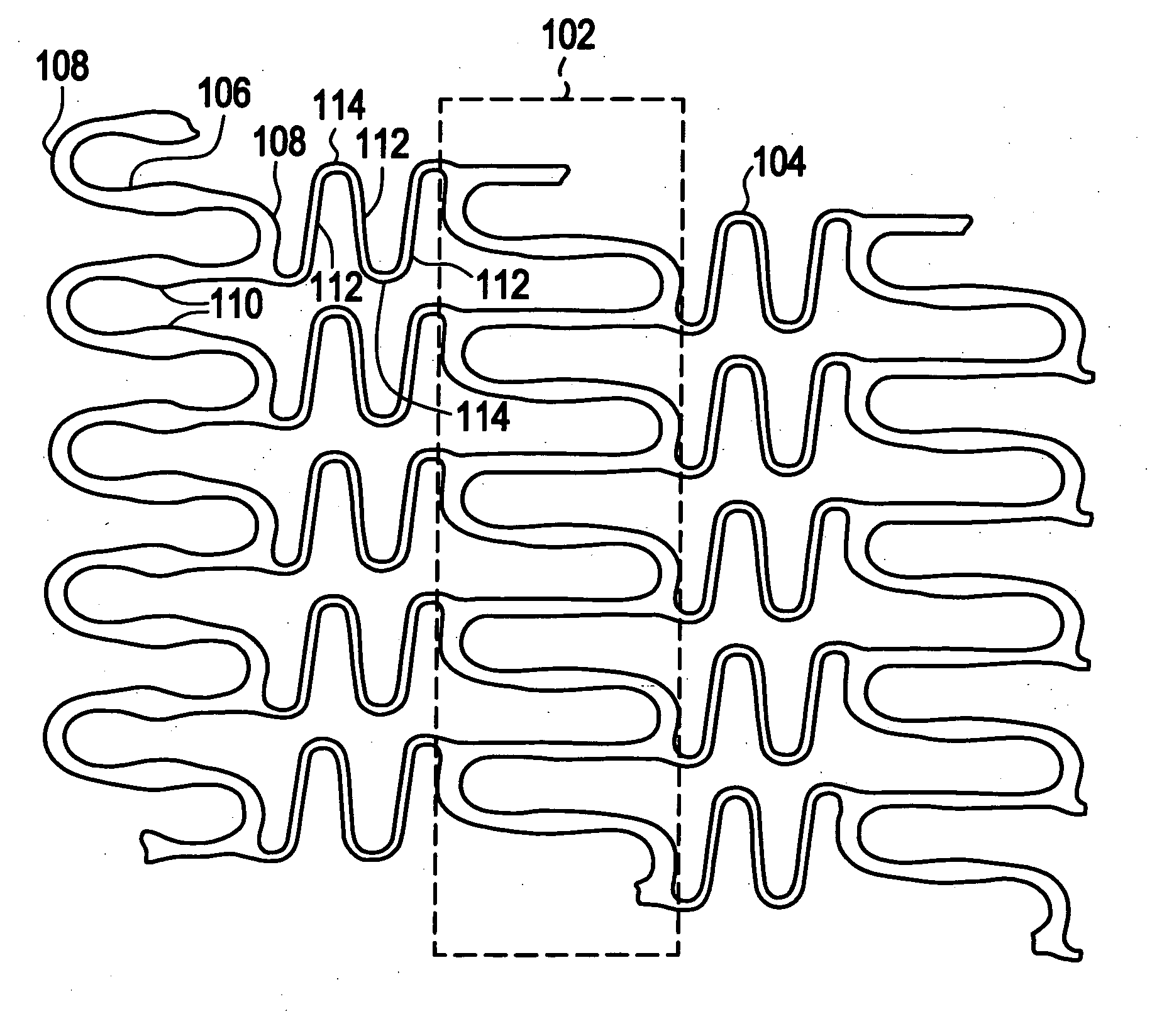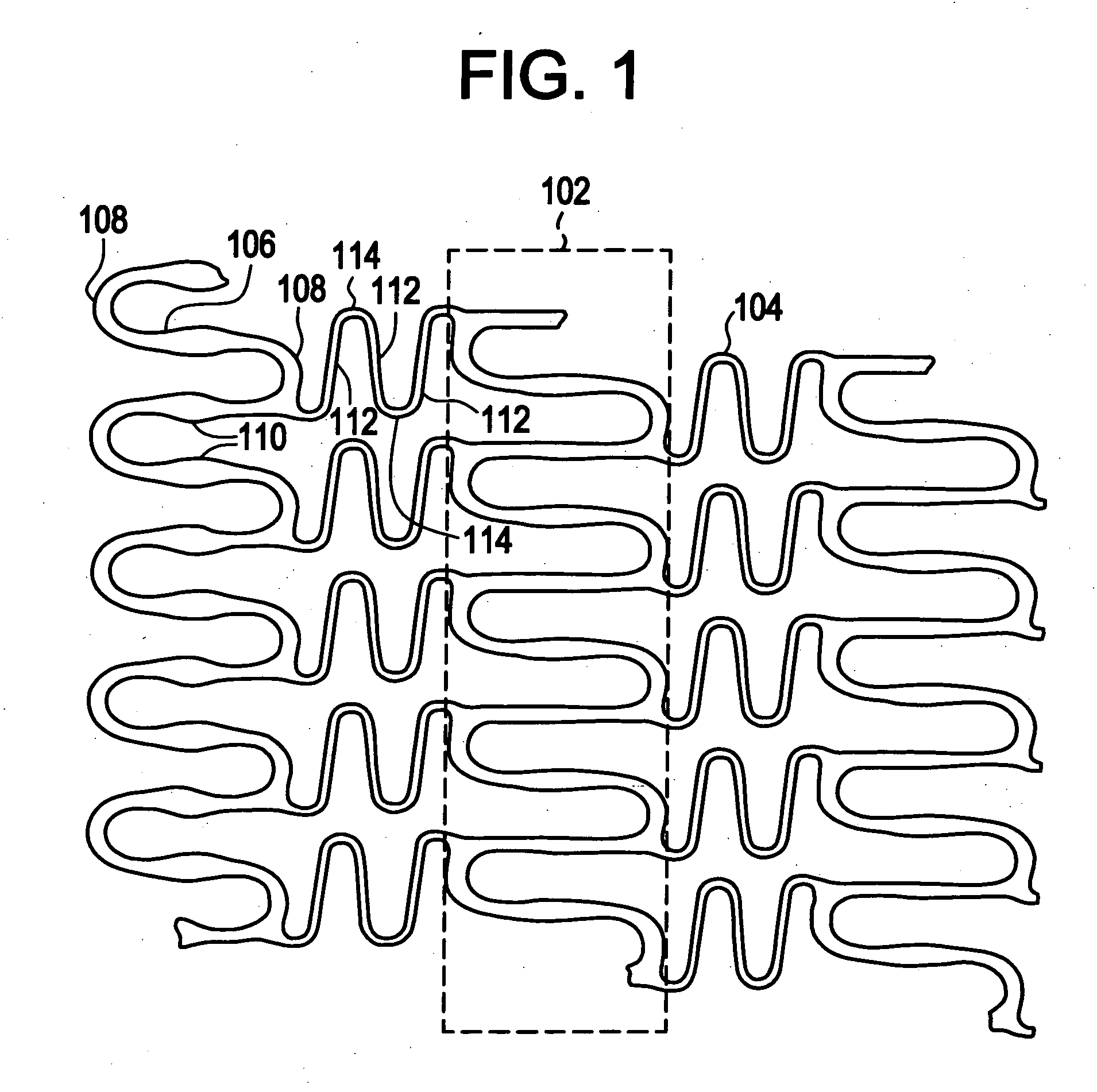Polymeric stent having modified molecular structures in the flexible connectors and in the radial struts and the radial arcs of the hoops
- Summary
- Abstract
- Description
- Claims
- Application Information
AI Technical Summary
Benefits of technology
Problems solved by technology
Method used
Image
Examples
example 1
[0048] Example 1 illustrates the effects of orientation in the range of 1×-2.8×on test film tests specimens of amorphous PLGA roughly 0.010″ thick. The yield 30 strength and tensile modulus for a draw ratio ranging from 1× to 2.8× are depicted in Table 1 below, where draw ratio is defined as the final size / original size in that particular direction.
[0049] The drawing process may be used in combination with prior or subsequent heat treatment such as annealing to affect the morphological or crystal structure of the polymer and to further tailor the material properties.
example 2
[0050] Example 2 illustrates the effects of orientation in the range of 1×-2.8× on 0.010″ thick test film tests specimens of PLGA that were annealed for eighteen hours at one hundred twenty degrees C. to impart approximately twenty-five to thirty-five percent crystallinity to the material. The yield strength and tensile modulus for draw ratios ranging from 1× to 2.8× are depicted in Table 2 below.
[0051] Examples 1 and 2 demonstrate that regardless of being amorphous or semi-crystalline, elongation at break in the direction of alignment improves with orientation of the polymer chains. As draw levels increase the modulus, tensile strength, and affects of strain hardening also tend to increase while elongation at break begins to diminish, although still at significantly higher levels than undrawn samples. Those skilled in the arts may surmise by the trends shown in Tables 1 and 2 that there would be a theoretical upper limit in the amount of draw where excessive levels of draw above t...
example 3
[0052] The effect of annealing for one hundred twenty degrees C. for eighteen hours either before or after drawing 2.1× is graphically illustrated in Table 3 in the stress-strain curves for PLGA material compared to amorphous material that is just drawn 2.1×. Essentially, Table 3 illustrates that annealing or heat treatment in combination with drawing may improve the strength properties even further and that the order of drawing and annealing plays a role, particularly in the plastic region of the curve, or after the onset of yielding. Annealing following drawing may increase tensile strength and modulus while maintaining high elongation to break. Annealing before drawing may require higher forces necessary to draw the material (higher levels of crystallinity) and may result in higher levels of strain hardening.
PUM
| Property | Measurement | Unit |
|---|---|---|
| Fraction | aaaaa | aaaaa |
| Fraction | aaaaa | aaaaa |
| Yield strength | aaaaa | aaaaa |
Abstract
Description
Claims
Application Information
 Login to View More
Login to View More - R&D
- Intellectual Property
- Life Sciences
- Materials
- Tech Scout
- Unparalleled Data Quality
- Higher Quality Content
- 60% Fewer Hallucinations
Browse by: Latest US Patents, China's latest patents, Technical Efficacy Thesaurus, Application Domain, Technology Topic, Popular Technical Reports.
© 2025 PatSnap. All rights reserved.Legal|Privacy policy|Modern Slavery Act Transparency Statement|Sitemap|About US| Contact US: help@patsnap.com



